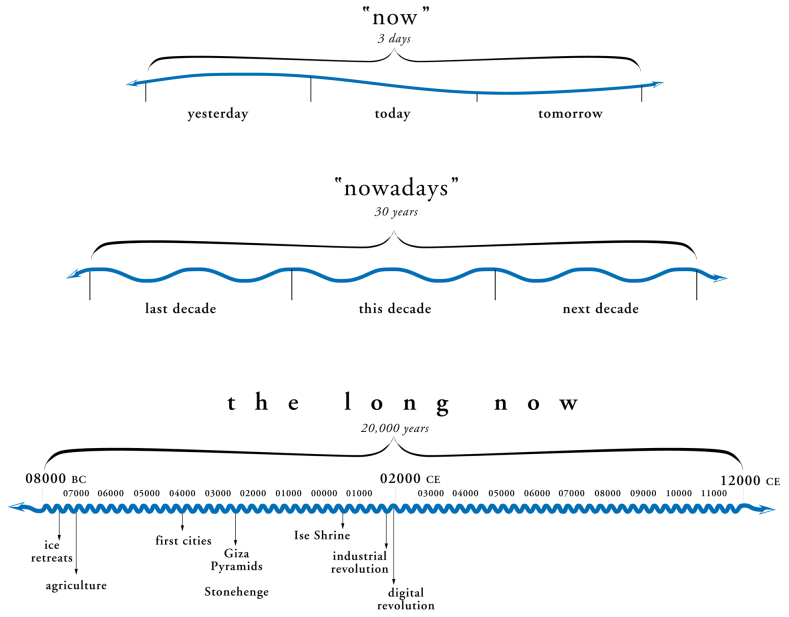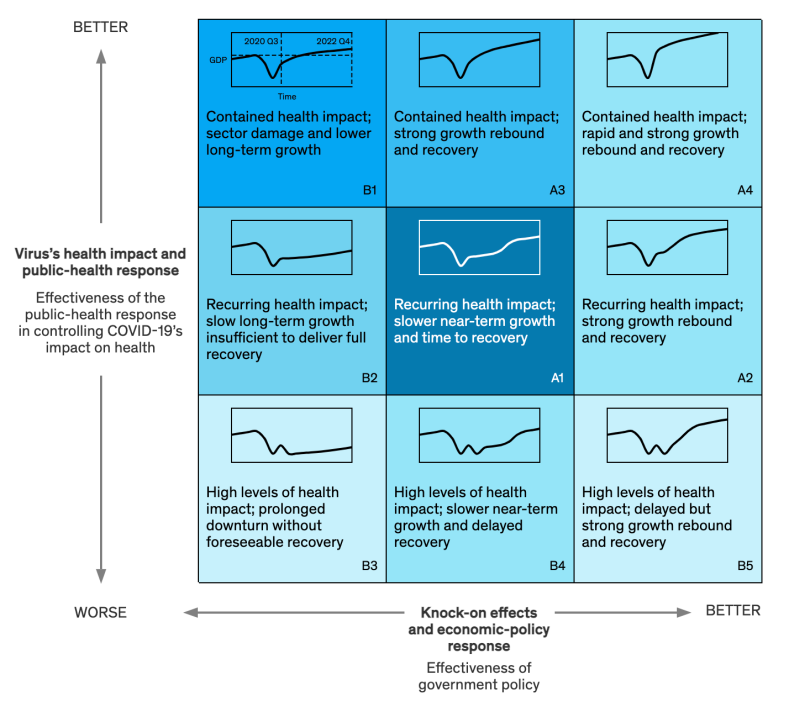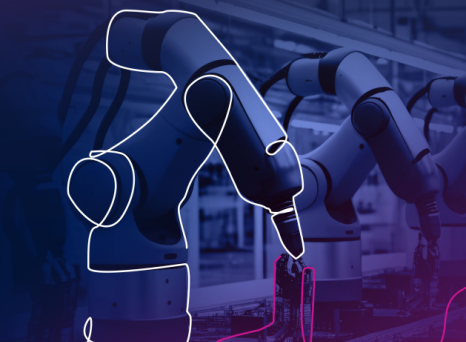A bit of long-term thinking can be good for R&D managers. Matsushita (parent company of Panasonic) started with a 250-year plan. Indeed, there are 33,000 companies in Japan that have been trading more than 100 years.
But that's nothing. The Long Now Foundation in San Francisco recommends adding a leading zero to the year, making this 02021. This encourages people to think about the planet and our future over the next 10,000 years. Wow!

We recommend starting with a more modest time horizon: five or 10 years. This article introduces some strategies and frameworks that innovation managers can use to plan ahead.
Scenario Planning
All of us have dealt with extraordinary changes in the last year. A small positive benefit of that is, now, we're all better able to imagine unexpected events and radical change.
This is the thinking at the heart of scenario planning. R&D project managers need to conjure up different hypothetical scenarios based on known starting points, such as demographics, environmental trends or technology developments (see Moore's Law).
For clarity, this kind of broad, hypothetical planning is different from the project management practice of testing different scenarios such as 'what if we're three months late', 'what if costs increase by 10%'.
MITSloan Management Review has published a helpful guide to scenario planning. This is a good first step into the process. Strategist Charles Roxburgh also has a few tips:
- Create a broad range of scenarios
- Don't rely on a narrow set of outcomes
- Embrace the extreme scenarios
- Don't discard seemingly-unlikely scenarios too quickly
- Don't use a single variable
- Develop at least 4 scenarios
- Start with a base or central case
- Give the scenarios catchy names
McKinsey's COVID-19 scenarios have helped executives wrap their minds around what the different scenarios are, and what would happen in each situation. Without telling people what would definitely happen, they provided a 'tool for thinking' that helped executives integrate different sources of information to explore an unpredictable future.

Goal-setting frameworks
There are a number of planning frameworks that can help project managers transcend tasks lists and Gantt charts.
Objectives and Key Results (OKRs) is perhaps the best known. This goal-setting framework is widely used and championed by Google. It focuses on outcomes: objectives. And, the external means to measure progress towards them: key results.
While it's most often used for annual or quarterly goal-setting, its emphasis on simplicity, brevity and externality make the OKR framework flexible enough to adapt to longer-term plans.
While you're considering OKRs, take a look at MSPOT, which helpfully includes 'omissions' (i.e. things you are NOT going to do) and OGSM, which adds measures and strategies to an OKR-like format.
How to Future
To get started thinking imaginatively about the future, 'create a physical space in your environment for the future to live, be examined, be reconfigured, be contested,' says Scott Smith, co-author of 'How to Future'.
A wall, a tabletop, a white board, a shelf, a hallway. The space doesn’t matter (OK, it can, functionally, as you’ll read in a moment), but its presence does.
Using the space, write things down, plant ideas, pin images and articles, add sticky notes. This exercise gives you a way to visualize your organization's future in an intuitive way. Then, transfer that thinking into your project management tools and practices.
So, we've address the how and the where of future planning, but what about the when?
Simply put, the best time to start planning for the future is right now.
Plans are irrelevant but planning is essential
Said General Eisenhower.


